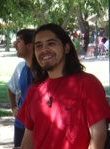libgnn, the Gradient Retropropagation Machine Library
The Beauty of GRM Design
libgnn : The Gradient Retropropagation Machine Library. A demonstration of a what can be accomplished by GRM-based design.
Download the source code and get the documentation. Also, check out grm: neural networks for your command line!
Towards Elegance
One of the mayor efforts and advances in Strong AI investigation is the development of Neural Networks.
Nowadays, Neural Networks have become one of the most flexible and powerful tools to model continuous systems.
We provide a flexible, modern and unified scheme for them: Gradient Retropropagation Machines.
History
The GRM concept has been developed by Pedro Ortega under the supervision and suggestions of Prof. Alejandro Bassi. Prof. Bassi had the idea that Neural Networks can be viewed just as process layers stacked upon another, and that the metaphor employed by Neural Networks researchers had the negative effect to restrict their application area. Also, Neural Networks are doomed to be employed only by experts of the area.
Pedro Ortega then started to search a library to build complex Neural Networks arquitectures, but without success. The available implementations seemed static ad-hoc solutions, and the human-brain metaphor were always present, making it almost imposible to extend them with new ideas. It is then when he decided to implement a new solution.
libgnn was born, which standed originally for Gnu Neural Network Library, but during its development, new ideas were needed. Compositionality/modularity, and functional programming, old ideas in computer science, found their way to be combined with the Neural Network concept. The result: Gradient Retropropagation Machines.
 |  | ||
| Prof. Alejandro Bassi | Pedro Ortega |
Torch, the work done by Ronan Collobert, Samy Bengio and Johnny Mariéthoz, was the starting point and main inspiration for libgnn. We greatly encourage its use for other Machine-Learning purposes. Thanks.
Contact
Coming soon...
Aknowlegdments
The Biomedical Research Team of the University of Chile: Prof. Pablo Estévez, Michel Tesmer, Cristián Figueroa, Gonzalo Ruz.
The LI2 Integrated Laboratories Team, University of Chile: specially to Sebastián Beca and Prof. Javier Ruiz-del-Solar.
The Torch Team: Ronan Collobert, Samy Bengio and Johnny Mariéthoz.
Choose a page:
Archives:
- None yet.